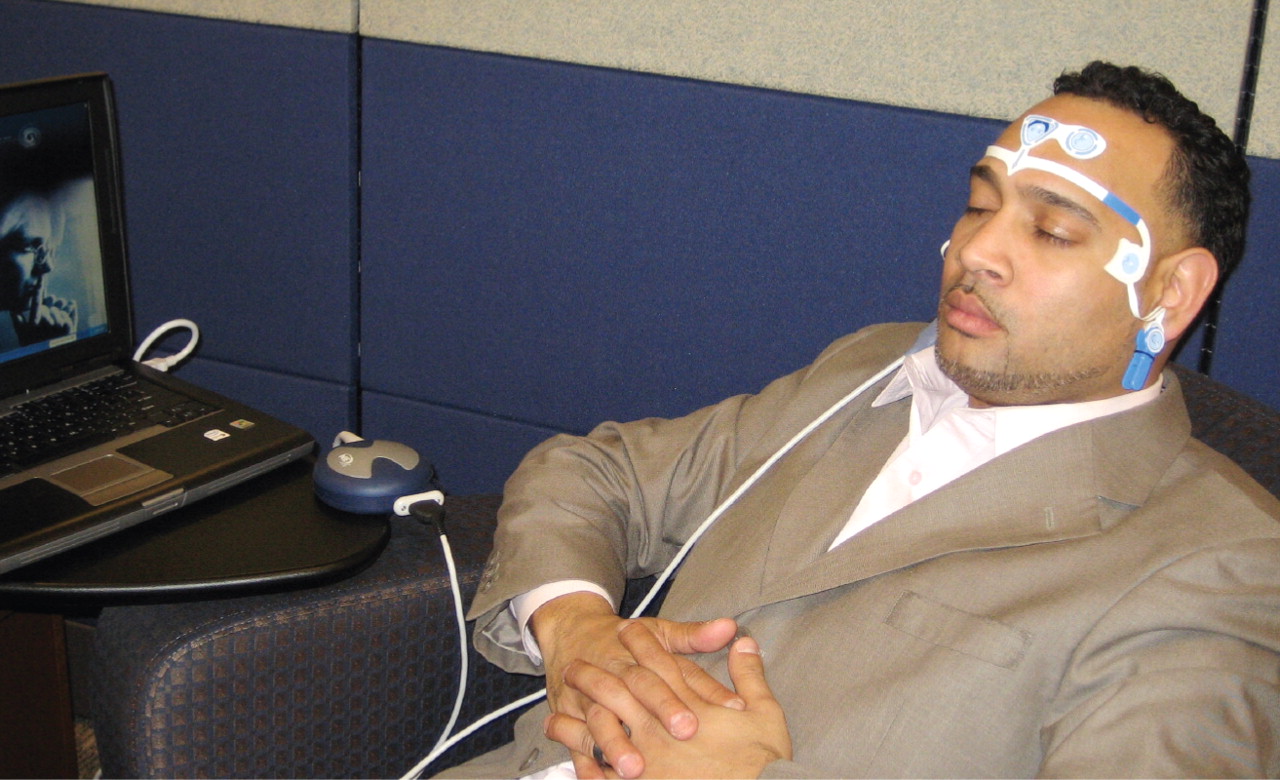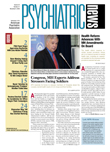As psychiatrists know all too well, treating depression can be a slow process. Patients often have to take an antidepressant for four to eight weeks before finding out whether they are responding to the medication. A biomarker derived from electroencephalography (EEG) provides some hope for hastening the process, however, by measuring the brain's response to an antidepressant after only a week of treatment, sometimes weeks before symptom relief is clinically observed.
This EEG-based biomarker, known as the Antidepressant Treatment Response (ATR) Index, is a composite index being developed by Aspect Medical Systems, a medical-device company based in Norwood, Mass. The ATR biomarker is calculated from specific quantitative EEG measurements taken before and one week after the patient starts an antidepressant.
Four electrodes are placed on the patient's forehead and two on the earlobes as the patient sits in a reclining chair. The EEG measurements are recorded for two closed-eye periods, each lasting six minutes, with an open-eye period of two minutes in between (see photo). The quantitative EEG readings are fed into computer software, which calculates the ATR score, adjusted to a scale of 0 to 100, after the two EEG sessions.
Two articles published in the September 30 Psychiatry Research reported results from the Biomarkers for Rapid Identification of Treatment Effectiveness in Major Depression (BRITE-MD) study. Funded by Aspect and conducted at nine research sites, the study showed that the ATR biomarker was able to predict to a reasonable degree depressive patients' eventual response and remission after seven weeks of antidepressant treatment.
In the BRITE-MD study, 375 patients were started on escitalopram 10 mg daily for one week and then randomly assigned to one of three treatment arms for the next six weeks: continuing with escitalopram 10 mg, switching to bupropion extended-release 300 mg, or taking both escitalopram and bupropion.
Majority Met Response Criteria
Of the 73 patients who were randomized to escitalopram for a total of seven weeks of treatment, 52 percent met the response criterion, defined as at least a 50 percent reduction from baseline in the 17-item Hamilton Rating Scale for Depression (HAM-D) total score. In addition, 38 percent reached remission, defined as a HAM-D score of no more than 7 at the end of week 7.
Based on statistical analyses, a best-fit ATR threshold (58.6) predicted response and remission in the escitalopram-treated patients significantly better than chance. Patients with a score higher than the threshold were deemed to have a positive biomarker (more likely to respond), and those with a score lower than the threshold were deemed to have a negative biomarker (less likely to respond).
For predicting response, the ATR biomarker had an accuracy of 74 percent, sensitivity of 58 percent, specificity of 91 percent, positive predictive value (PPV) of 88 percent, and negative predictive value (NPV) of 67 percent. For predicting remission, the accuracy, sensitivity, specificity, PPV, and NPV were 74 percent, 61 percent, 82 percent, 68 percent, and 77 percent, respectively.
In comparison, neither serum concentrations of escitalopram and its active metabolite nor genetic tests of 5HTTLPR and 5HT2a polymorphisms predicted treatment response or remission. Early reduction of HAM-D score from baseline on day 7 did predict eventual response but did not predict remission. Clinicians' impression of symptom improvement and prediction of response and remission on day 7 also fared no better than chance.
The study findings need to be replicated, but so far the ATR biomarker looks promising for future clinical application, said Andrew Leuchter, M.D., the lead study author, in an interview with Psychiatric News.
Leuchter is a professor of psychiatry and biobehavioral sciences at the David Geffen School of Medicine at the University of California at Los Angeles, one of the sites that conducted the BRITE-MD study. “The EEG is easy to do, the electrodes are easy to put on, and the whole test takes less than 15 minutes,” he noted.
How It May Work
Researchers do not yet know the exact mechanism of the ATR biomarker, but they think it involves quantitative EEG picking up changes in brain activities long before clinical improvement of mood symptoms appears.
“Most of the brain's energy use goes to create electrical activities [among neurons], which have some relationship to how the brain works and how it responds to antidepressant medications,” Leuchter explained. The midline prefrontal signals picked up by the electrodes are believed to originate from the anterior cingulate region in the brain, he said, which is a primary region affected by mood disorders and changed by antidepressants. “What we are listening to with the EEG is anterior cingulate activities.”
In the BRITE-MD study, two-thirds of the participants were randomly switched to either bupropion or the bupropion-escitalopram combination after taking escitalopram for one week. Statistical analysis identified an ATR cutoff score of 52 that significantly predicted patients' likelihood to respond to either the continued escitalopram or the bupropion. Of those who had an ATR score at or above 52 after one week on escitalopram, 68 percent eventually achieved response to escitalopram, significantly higher than was the case with the 28 percent who had an ATR score below 52. However, patients with ATR scores below 52 on escitalopram (suggesting a lower chance of responding to escitalopram) were significantly more likely to respond to bupropion monotherapy than were those with ATR scores at or above 52 after they were switched to bupropion.
The cutoff score was not able to predict patients' response to the combination therapy.
Thus, the authors suggested, the ATR biomarker may be helpful in quickly identifying patients who are unlikely to respond to one antidepressant but may benefit from a medication switch.
“Our goal is to find something to help guide patient care, to provide a tool for clinicians to make decisions sooner, and to shorten the process of choosing a treatment for patients with depression,” said Leuchter.

